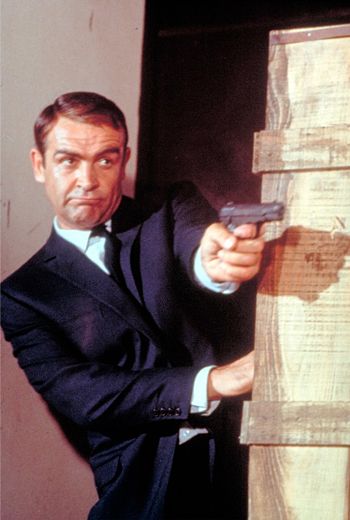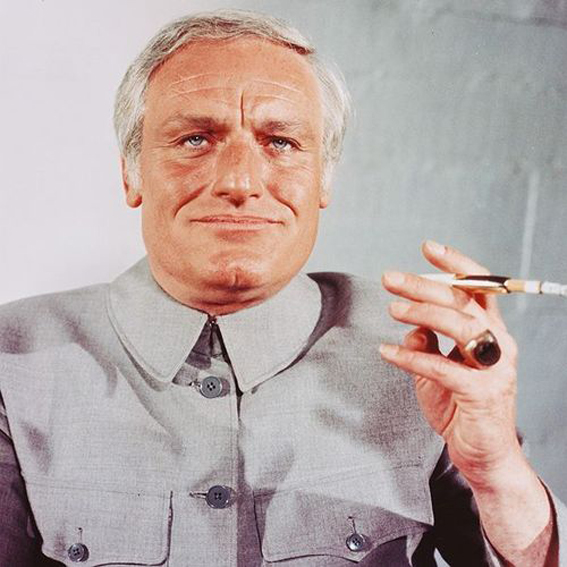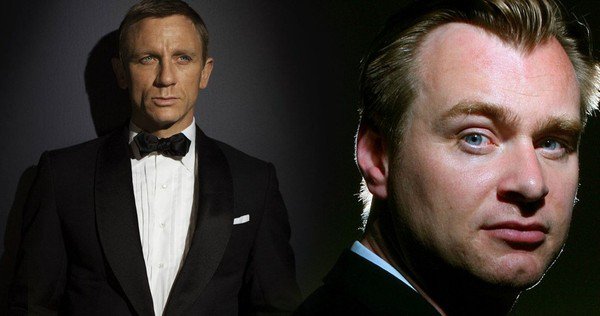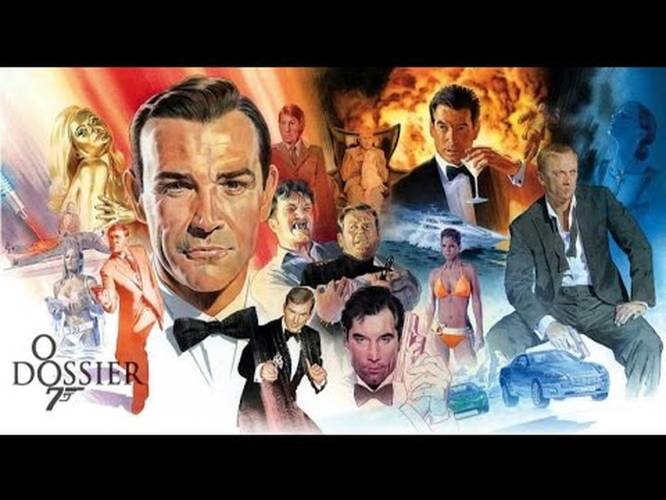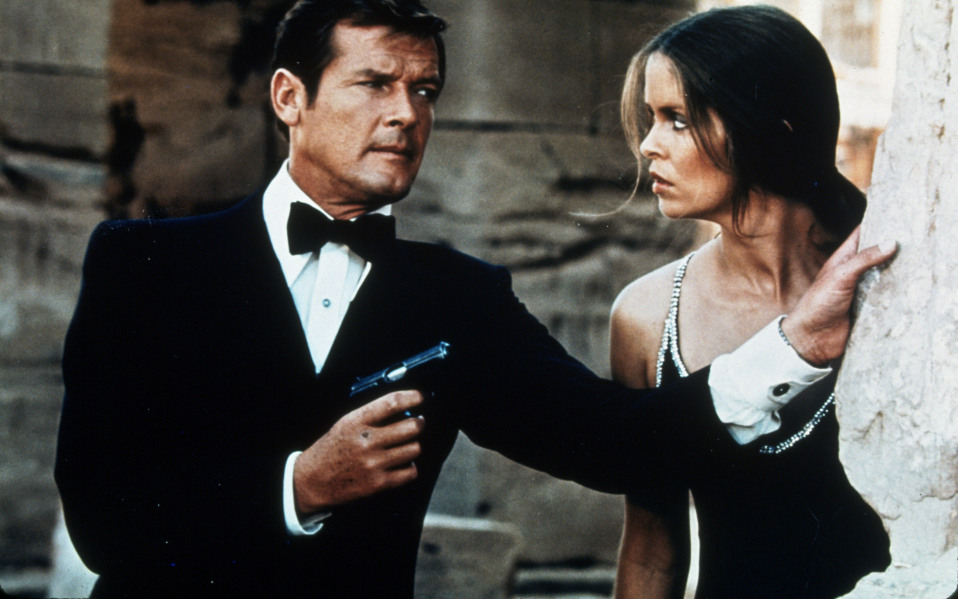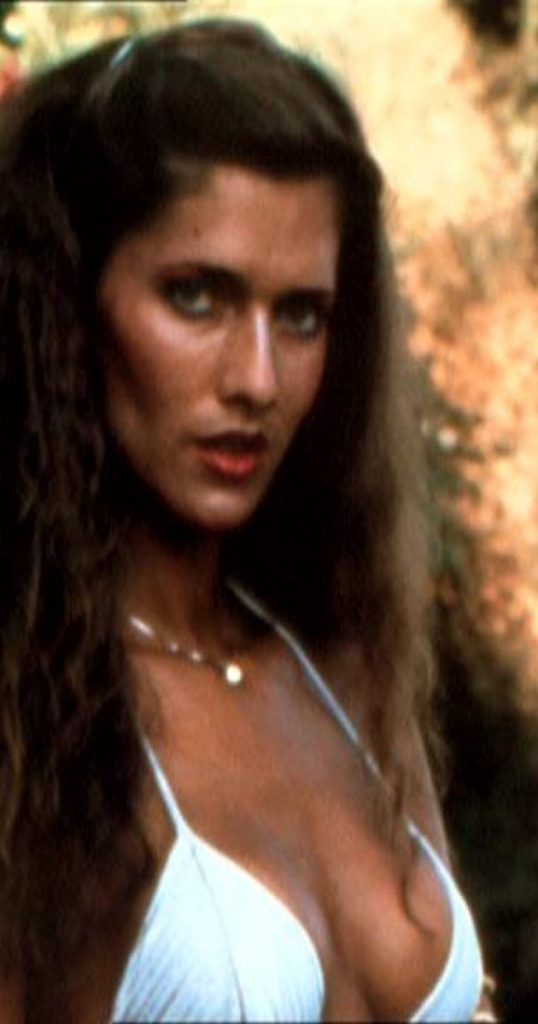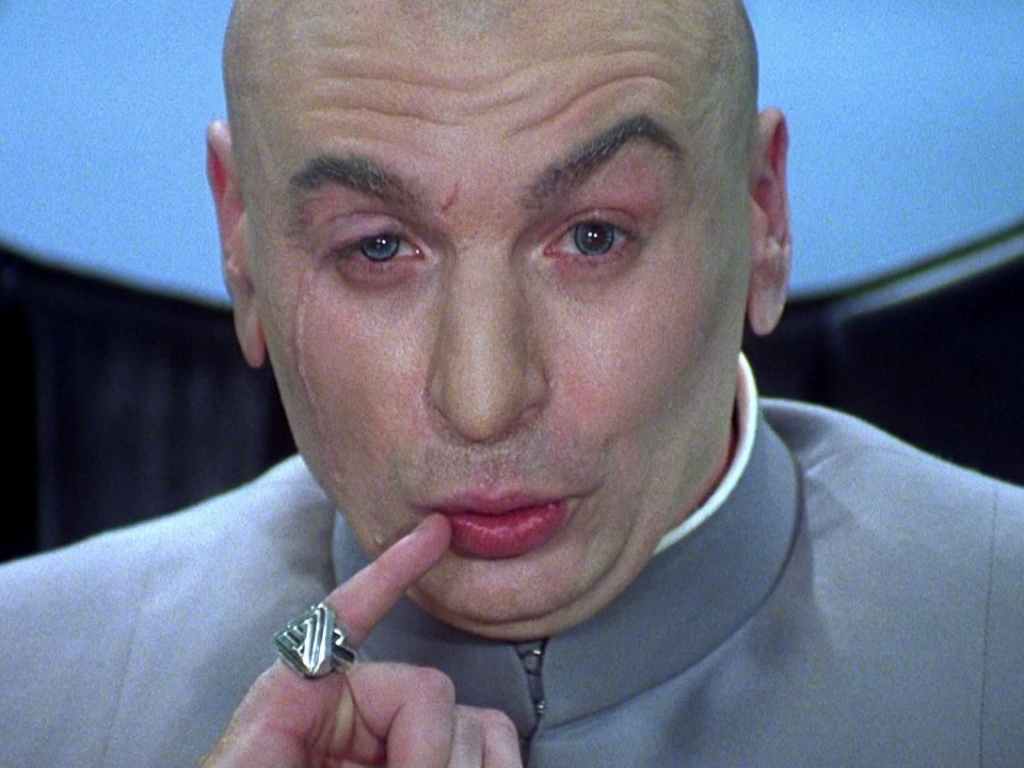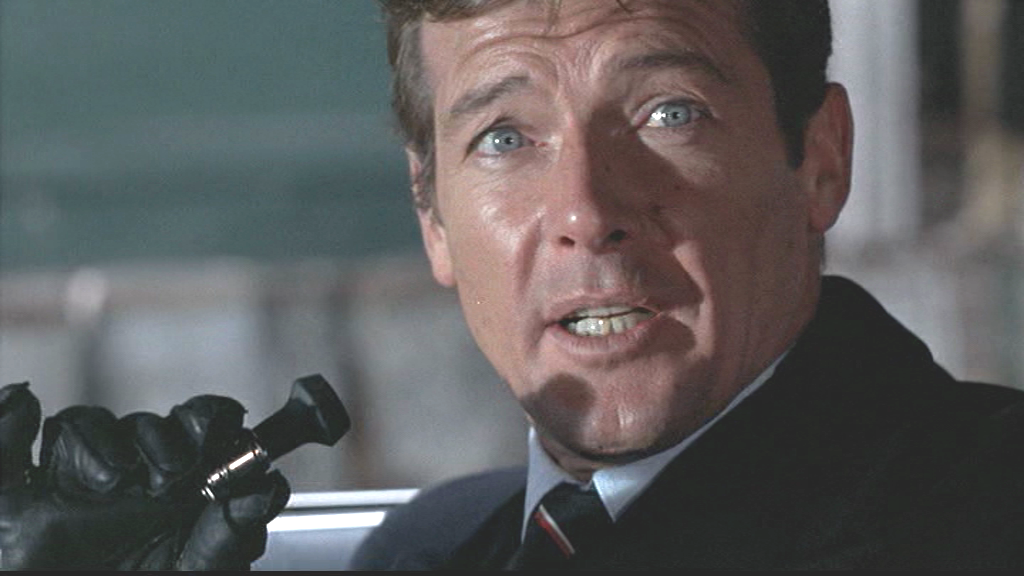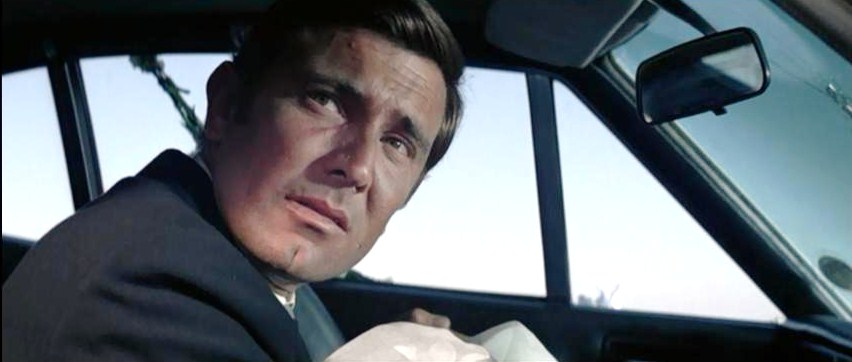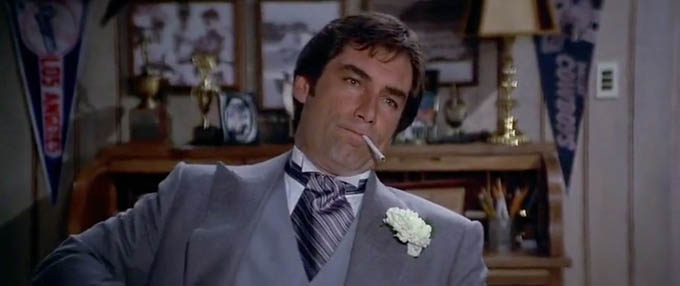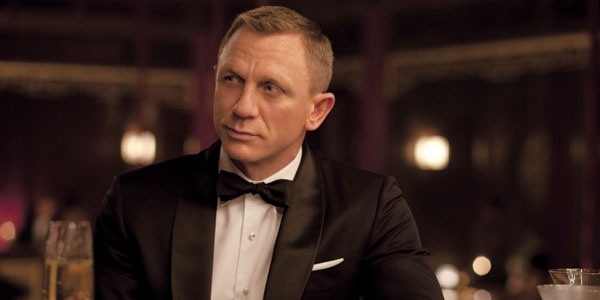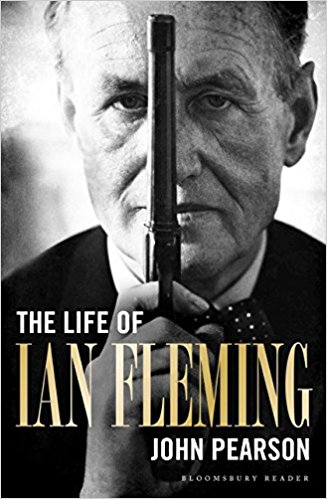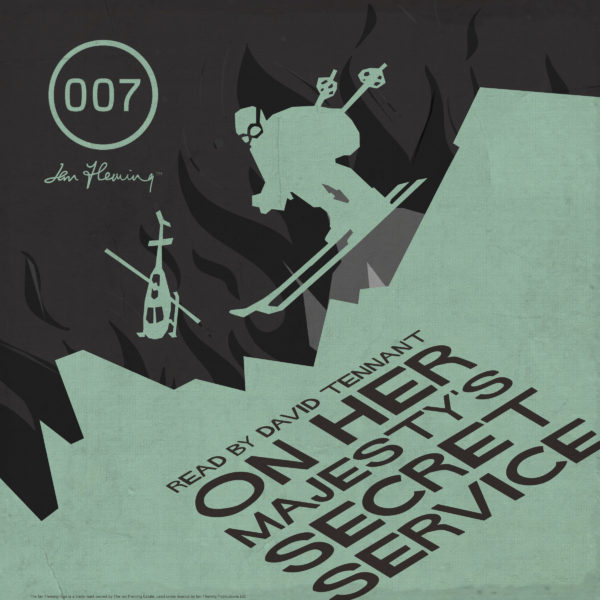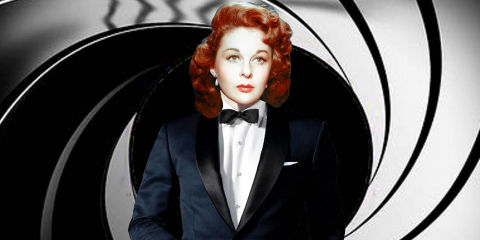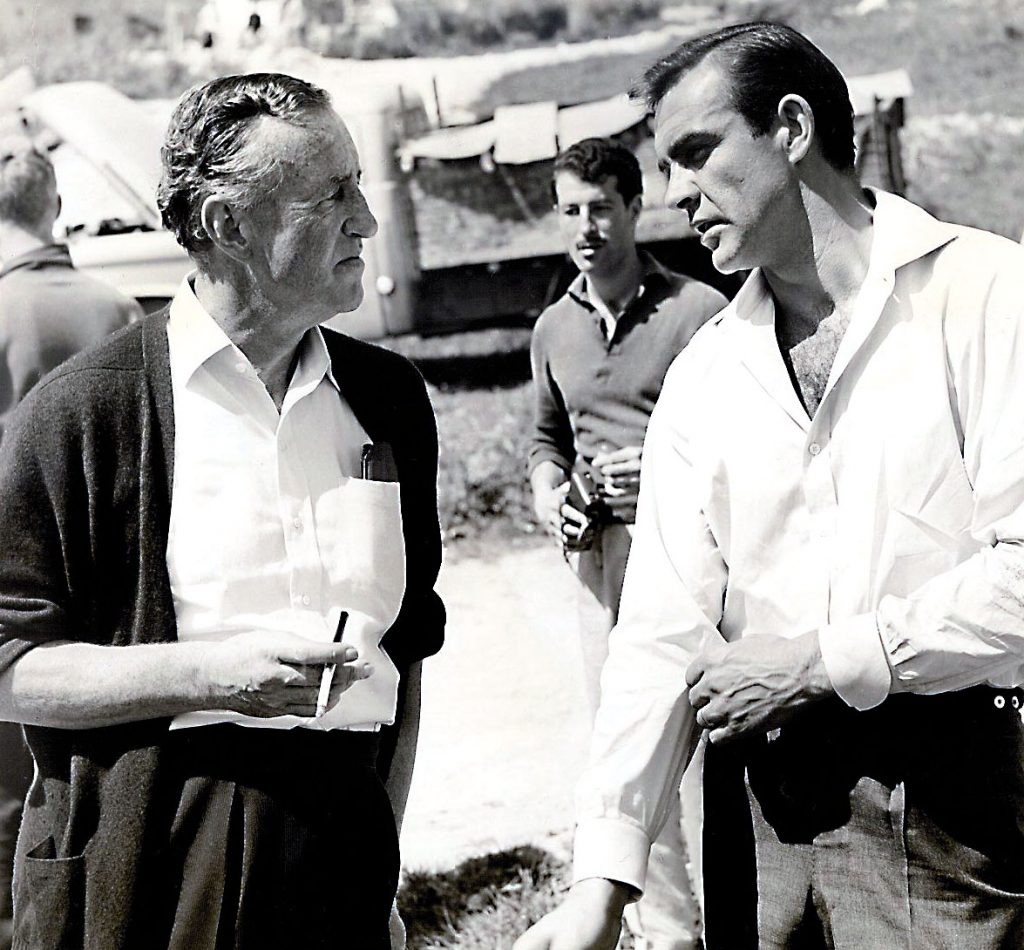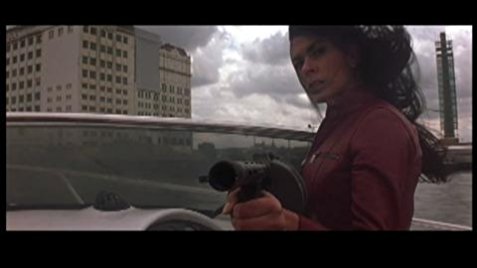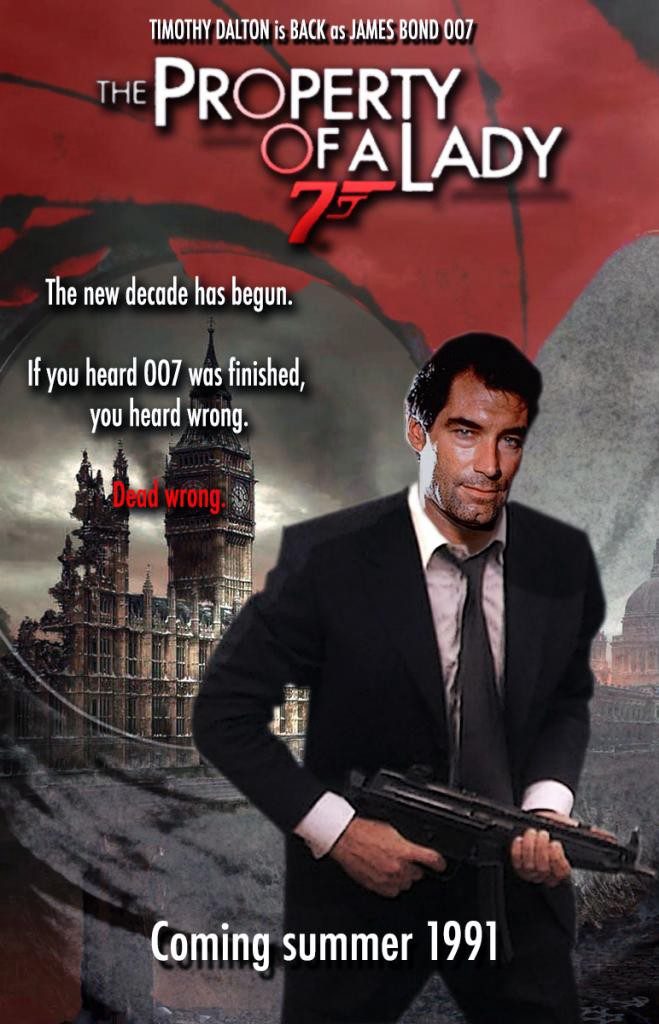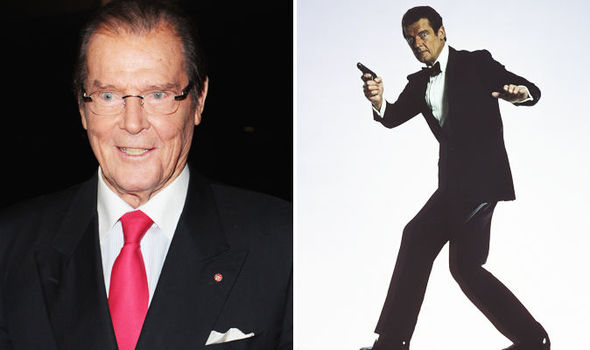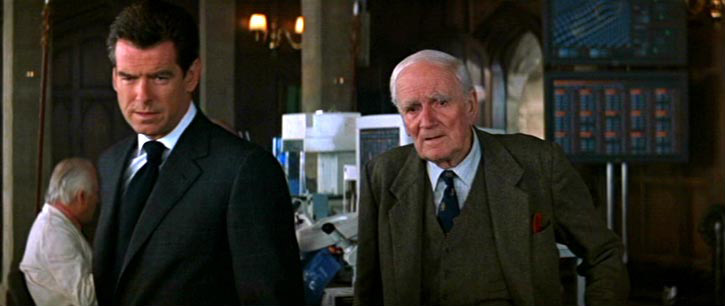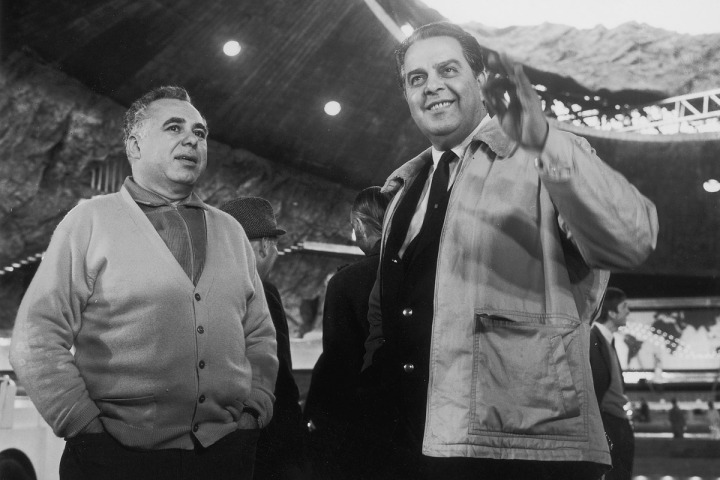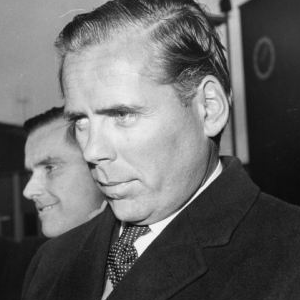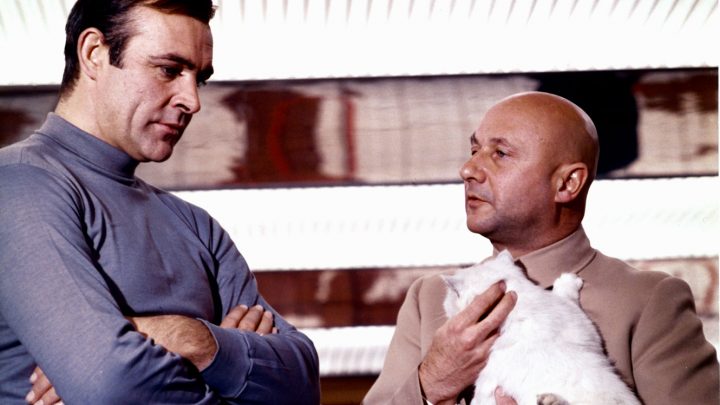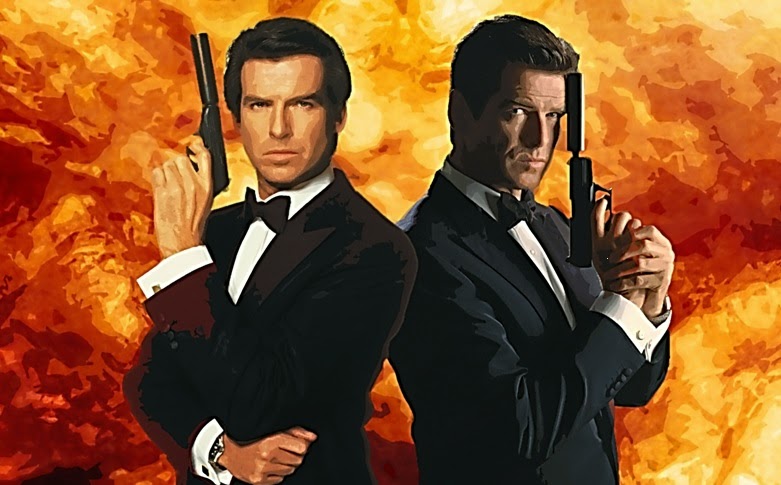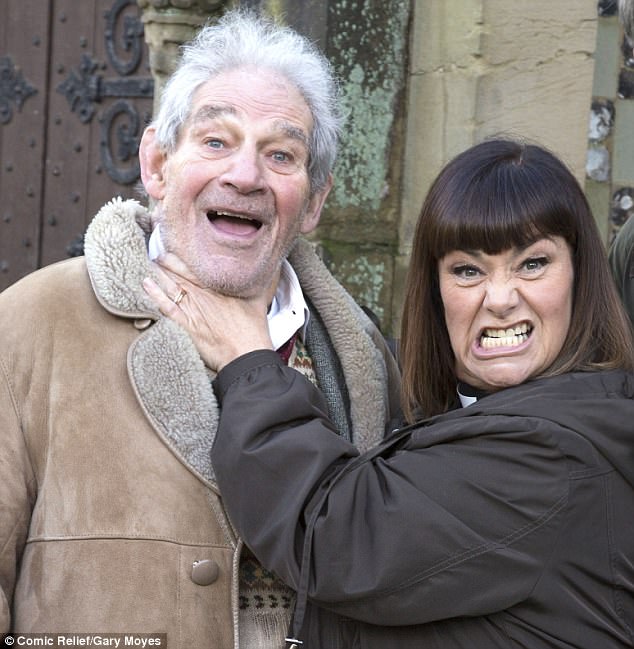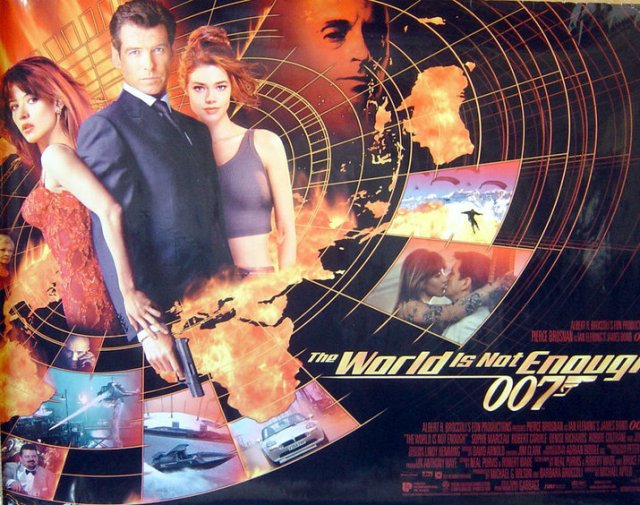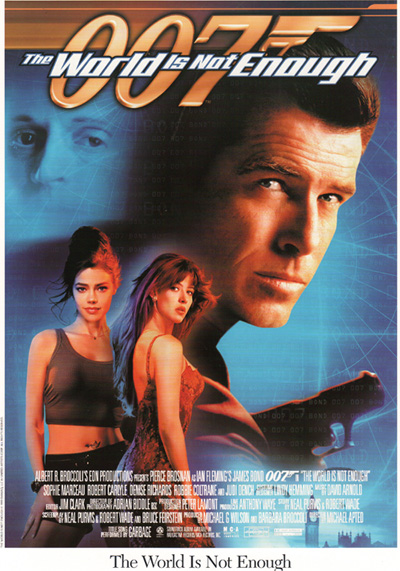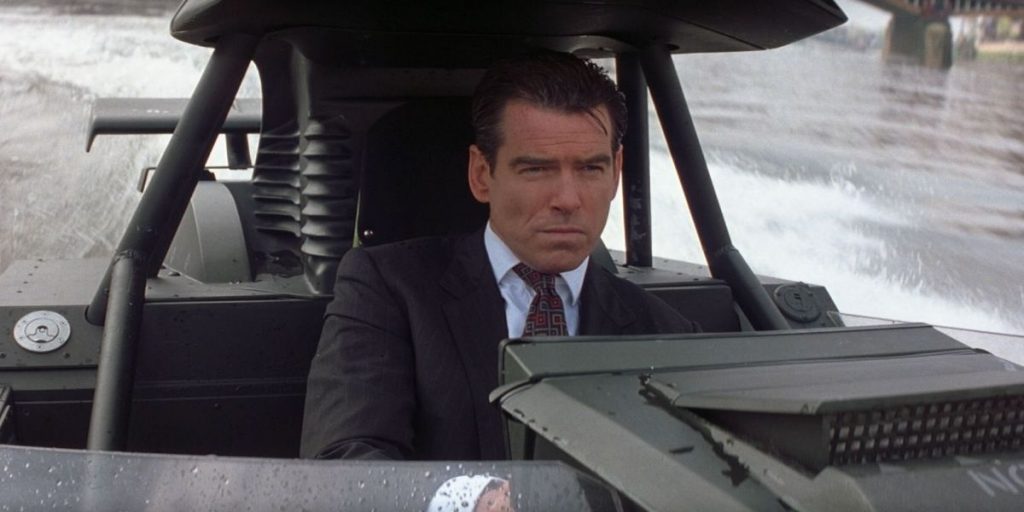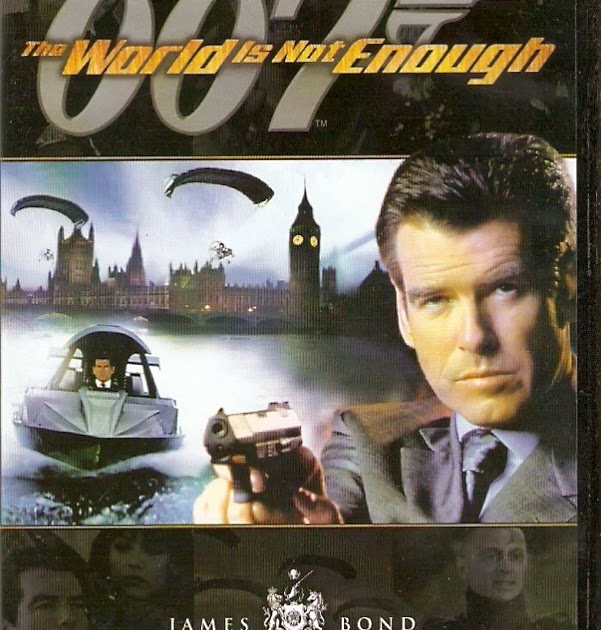 “My agent told me, ‘If you take that role you’ll never work again’. But what movie could you do that they’d still be interviewing you for 20 years later?”—Lynn-Holly Johnson on her role as Bibi Dahl in FOR YOUR EYES ONLY. (TV GUIDE 11/13-19/1999)
“My agent told me, ‘If you take that role you’ll never work again’. But what movie could you do that they’d still be interviewing you for 20 years later?”—Lynn-Holly Johnson on her role as Bibi Dahl in FOR YOUR EYES ONLY. (TV GUIDE 11/13-19/1999)
“I’ve always said that if I never work again because I played a Bond girl, then I probably was never going to work again anyway.”—Denise Richards on taking the role of Dr. Christmas Jones in THE WORLD IS NOT ENOUGH (Entertainment Weekly 11/19/99)
They have been socialites, assassins, pilots, mistresses, secret agents, smugglers, tarot-card readers, geologists, cellists, computer programmers, nuclear physicists and in some cases: unemployed. They are Bond Girls. For decades they have been admired, elevated, loved, sometimes scorned but in every case misunderstood. Why is it that the women who portray them seem to disappear off the face of the earth? Are Bond Girls doomed to a post-007 life of ignominy? Or is the myth that Bond Girls are cursed really just a myth and nothing more?
For decades the Bond Girls have gained a reputation as being chronically unemployable. For some, being a Bond Girl was considered the “kiss of death”, and many an agent warned his client not to take the role. Over time Bond Girls were considered to be cursed, as it seemed no actress went on to become a major star after being prominently featured alongside 007. How could this be? How could some of the most beautiful actresses on the planet not catapult to stardom after starring in such a high profile project as the James Bond films? To be fair, a number of Bond actresses have gone the low-budget, straight-to-video/cable movie route, but it hasn’t always been by choice. In her column “Bond Girls: Only Diamonds Are Forever” at film.com, writer Moira Macdonald reopened the debate, but missed several major reasons why Bond Girls have it so tough. And with some Girls, there is more than one reason why sustained, big screen success has eluded them.
EUROCENTRIST ATTITUDES
To be blunt, the number one reason why many of the Bond Girls have not gone on to have major careers in Hollywood is because so many of them aren’t English/American. Mie Hama, Karen Dor, Papillon Soo-Soo, Daniela Bianchi and Claudine Auger, to name just a few, have all run up against the ethnic brick wall. Hama was a Japanese actress, Dor was German, Soo-Soo and Auger were French, and Bianchi is Italian. American actresses find it tough enough to break into Hollywood. Why would foreign actresses find it any easier?
That is assuming, of course, that becoming a Bond Girl automatically means the actress wants to become a huge star or even a Hollywood celebrity. It’s very narrow-minded thinking to automatically assume that an actress isn’t a success simply because she’s not doing Hollywood blockbuster films. Many of the Bond Girls have gone on to have successful careers in their native countries (Carole Bouquet-France), while others chose not to pursue an acting career at all(Daniela Bianchi-Italy, her role in “Operation Kid Brother” notwithstanding). Some were models who only wanted the temporary spotlight, quite happy to fade into the background once their movie had premiered. Just because you aren’t working in Hollywood doesn’t mean you aren’t successful. Believe it or not, the entertainment industry does reach beyond Southern California.
Izabella Scorupco (Natalya-Goldeneye) is only the latest example of a Bond Girl hitting the ethnic brick wall, yet she’s part survivor, part victim. Scorupco is not only an exotic beauty (she has both Polish and Italian blood in her) but she’s an extremely talented actress. If the theory goes that Bond Girls simply can’t act and therefore are never able to get good work post-Bond, a theory Ms. Macdonald herself supports, then why has Scorupco found it so difficult to find work? Think I’m making too much out of this? Consider the following: Izabella’s new movie, “Vertical Limit” (which co-starts Chris O’Donnell and Bill Paxton), is her first big budget action film since 1995’s GOLDENEYE; it should be her second. Director Martin Campbell specifically requested Scorupco for the role of Elena Montero in his 1998 hit film MASK OF ZORRO. Campbell was overruled by studio execs and told to use Catherine Zeta-Jones, another relatively unknown actress at the time. Don’t let the name Zeta-Jones fool you. Catherine is a Welsh actress. She was no more suited for the part than Izabella was, yet Zeta-Jones was “English” and therefore got the greater consideration for the role (which was, ironically, that of a Mexican woman).
Then there is Michelle Yeoh. While critical reaction to TOMORROW NEVER DIES was mixed, there was almost universal praise for her role as secret agent Wai Lin. Immediately after the release of `Dies`, MGM/UA began developing a comedy/action film to star Yeoh and there was even talk of the Wai Lin character being spun off into her own series of films. So what happened? In typical American fashion, Yeoh got left behind so that studios could concentrate on other “Asian Invasion” stars such as Jackie Chan, Jet Li, Sammo Hung and Chow Yung-Fat. In other words, MEN.
Yeoh has had plenty of work since `Dies`, but it hasn`t all been film work. She`s been digitized for the Tomorrow Never Dies videogame for PlayStation, endorsed L`Oreal make up products and modeled Anne Klein`s fall line of clothing. Her next film, CROUCHING TIGER, HIDDEN DRAGON is her first big film since TOMORROW NEVER DIES, yet look who is in it: Chow Yung-Fat, with Ang Lee directing. It took a male co-star and a male director, both of whom are Asian, to get the film off the ground. If Yeoh ever waits for Hollywood to find the right vehicle to showcase her talents, she`ll always be waiting. Hollywood can barely figure out what to do with American actresses i.e. white actresses, so to expect them to think globally is almost an illusion.
But even if you are American, that’s still no guarantee you’ll get your foot in the door to other film projects, especially if you are black. Trina Parks (Thumper-Diamonds Are Forever) and Gloria Hendry (Rosie Carver-Live and Let Die) represented the first appearance of any black actresses in the Bond series. Parks starred opposite Connery in 1971, and while Connery’s Bond acknowledged what a tasty treat Thumper would make, there was no kiss or other physical romantic interaction between the two. Bond wouldn’t get physical with a black woman until the next film, Live and Let Die (1973). After Mrs. Hendry’s performance, there would be a dearth of black actresses in Bond films until 1985’s A VIEW TO A KILL. For Parks and Hendry, they simply came of age as actresses in an era that still had yet to figure out how to use black talent. ‘Diamonds’ and ‘Let Die’ came out at the end of the Cultural Revolution and civil rights movements that marked the 60’s, but the 70’s would not be much of an improvement. It would take another decade or more before black talent would be able to command leading or supporting roles in mainstream Hollywood fare. Today, the casting of Halle Berry as Kurt Russell’s love interest in EXECUTIVE DECISION or Thandie Newton as Tom Cruise’s love interest in MISSION: IMPOSSIBLE 2 barely raises an eyebrow, but it took actresses like Mrs. Hendry to break the racial barrier in a Bond film during a time when the world might still have not felt ready for it.
When you think about big, A-list female movie stars that are known all over the world, only a few come to mind. Right now that list would include Julia Roberts, Sharon Stone, Meg Ryan, Sigourney Weaver and Catherine Zeta-Jones to name just a few. In the past that list included Sophia Loren, Faye Dunaway, Racquel Welch, Bette Davis, Elizabeth Taylor and of course Marilyn Monroe. Notice that most, if not all, the biggest actresses in show business are American women. The world loves them. We export them to other countries and the men go wild. But how willing are Americans to embrace the women of other countries? When Pamela Anderson washed up on the shores of Cannes five years ago to promote BARB WIRE, she created a media firestorm by doing little more than wearing a tight black bustier and leather pants. Conversely, when French actress Sophie Marceau, extremely talented and equally as beautiful, came to America to promote LOST AND FOUND and THE WORLD IS NOT ENOUGH, she landed not with a bang, but a whimper. American studio heads love to sell and exploit American women to other countries, but are unwilling to take a chance on a similarly beautiful, talented, foreign actress.
The four most visible Bond Girls at the moment are Kim Basinger, Jane Seymour, Tanya Roberts and Carey Lowell. What do they all have in common? They are American/English. Ms. Macdonald, in her column, discounts Basinger as a legitimate Bond Girl since her film, NEVER SAY NEVER AGAIN, wasn’t produced by MGM/UA and is therefore not “official”. If you discount Mrs. Basinger, you also discount her 1998 Oscar for Best Supporting Actress.
Jane Seymour found post-Bond success in such films as LASSITTER and SOMEWHERE IN TIME, and television work such as BATTLESTAR GALACTICA and DR.QUINN: MEDICINE WOMAN. Tanya Roberts has made her comeback in the hit television series THAT 70’S SHOW (and audiences are laughing with her, not at her, as opposed to her work in A VIEW TO A KILL). Carey Lowell followed up LICENSE TO KILL with THE GUARDIAN, a turn as a spokeswoman/model for L`Oreal and later, a two year stint on the highly acclaimed NBC show LAW AND ORDER (a show she chose to leave in order to raise a family with Richard Gere).
Lowell wasn’t the only one to take a break from acting in order to take care of a family. Barbara Bach (Anya-The Spy Who Loved Me) retired from acting in order to help herself maintain sobriety from drugs and alcohol and to support her husband’s road to recovery as well (she’s married to ex-Beatles Ringo Starr). Teri Hatcher (Paris-Tomorrow Never Dies) took time off from acting to raise a new son with husband Jon Tenney. In other words, not every actress who has played a Bond Girl feels the need to be a superstar. Some things in life are more important, and these actresses are showing what their priorities are.
EQUAL PAY FOR EQUAL WORK-NOT
The second biggest reason why Bond Girl careers have not shot off at a clip comparable to their contemporaries is because for the longest time Hollywood simply didn’t care about womens roles. Not that they care much now, but it hasn’t been until the past five years or less that actresses’ salary rates caught up with men. An A-list star such as Julia Roberts can now routinely command $20 million dollars a picture. Yet in the 60’s, 70’s and even the 80’s, Bond Girls as well as your normal, routine actress could never dream of earning that much money. Men always made the higher salaries because it was expected that the actors were what the audience came to see, not the actresses.
And let’s not forget the kind of attitudes that the Bond Girls had to put up with from the men. Despite the Cultural Revolution of the 60’s, women were still regarded as little more than sex objects (and though that hasn’t changed much even in the 90’s, women now have greater control over their image and can choose to or not to exploit their sexuality). They weren’t expected to have successful careers. Their identities were supposed to be formulated and cemented through their relationships with men. The 60’s were the height of hedonistic lifestyles, perfectly personified by the literary and film versions of James Bond, as well as the pages of Playboy Magazine. Women weren’t expected to be studio CEO’s, directors or even producers. No, the 60’s were a shagadellic era of free love, free sex, drugs and rock ‘n roll baby! The women were just supposed to come along for the ride. They weren’t taken very seriously.
Those perceptions have changed somewhat, as women break out from the traditional “chick flick” genre and move into more male dominated categories such as action. But even though women have tried to break into big budget, mainstream action flicks, the results have been less than enthralling. POINT OF NO RETURN, ALIEN RESURRECTION and THE LONG KISS GOODNIGHT failed to motivate moviegoers because women generally prefer drama over action and most men, though loathe to admit it, are intimidated by women with a gun. For all the talk about how women are getting more control over their careers, the most talked about female roles in the 90`s were Sharon Stone`s Catherine Trammell in BASIC INSTINCT, Demi Moore in STRIPTEASE and Elizabeth Berkley in SHOWGIRLS. Michelle Pfeiffer won critical praise for her role as Catwoman in BATMAN RETURNS; an entire series of Catwoman films was in development. And yet even with Michelle Pfeiffer`s considerable star power, she was unable to get the project through. If an established Hollywood veteran finds it difficult to get a series made out of a popular character, what chance does an outsider, a foreign actress, have of getting a break in Hollywood?
Even as things have gotten better for actresses in general, there are still complaints that “there aren’t enough good roles written for women” these days. In 1993, The Academy of Motion Pictures, Arts and Sciences found it extremely difficult to put together a list of five nominations for Best Actress in what was dubbed as a year in which the Academy paid tribute to women in film. Bond Girl roles are an entirely different breed of role, yet they are unfairly held up to the same standards as other actresses who themselves find it difficult getting “real work”. If actresses find it tough today to get good roles, just imagine what it was like in 1963, when no one expected much more out of you than to stand over an air duct and let your dress fly up over your platinum blonde wig. Hollywood didn`t reward women for being tough like men, smart like men or brave like men.
UNREALISTIC EXPECTATIONS
It’s the press that created the “Curse of the Bond Girls” and it’s the press that keeps it going. It’s become such an urban legend that every new Bond Girl, while doing publicity for her film, feels the need to explain why her character is not just some bimbo on Bond’s arm. It’s not enough anymore for an actress to simply explain her role in relationship to the rest of the film. She has to distinguish and differentiate herself from the Bond Girls that have come before her.
Look at the way the role of the Bond Girl has evolved over the years. DR.NO gave us Honey Ryder, a naïve island local who lived off the land. The film also gave us Sylvia Trench, the social climbing casino trawler who ingratiates herself into Bond’s presence by wearing his pajama top. Fast-forward 37 years. THE WORLD IS NOT ENOUGH gives us two very different portrayals of Bond Girls. One is an International Nuclear Physicist while the other heads up the world’s largest oil company (though she killed her father to get that position). As the role of women changed in modern day society, so did the portrayal of the Bond Girls.
The BatWomen, Kim Basinger, Michelle Pfeiffer, Nicole Kidman and Uma Thurman, have all found steady work since their respective films. Why? Because they were cast as already established actresses. Not so with Bond Girls. Many get picked out of virtual anonymity and then thrust into the spotlight of a guaranteed blockbuster. Do you have any idea how difficult it is to replicate that kind of feat?
Still, the perception that all Bond Girls were failures is unfortunate; as many went on to do a wide variety of work.
Lois Chiles (Holly-Moonraker) followed up MOONRAKER with a two year stint on DALLAS, playing J.R. Ewing’s nemesis Holly Harwood, as well as a southern belle in the Alan Alda comedy SWEET LIBERTY. Barbara Carerra (Fatima Blush-Never Say Never Again) also followed up her role as Bond Girl with a one year stint on DALLAS, playing the devious Angelica Nero.
Maryam D’abo (Kara-The Living Daylights) went straight from starring in THE LIVING DAYLIGHTS to starring in the very successful television mini-series SOMETHING IS OUT THERE. When NBC tried to turn the miniseries into a regular television series, it tanked. D’abo has continued to work in small budget pictures and on LIFETIME-TV movies of the week.
Diana Rigg (Tracy-On Her Majesty’s Secret Service) went on to do a variety of stage and screen work, including hosting PBS’ Mystery Theater Series.
Jill St. John (Tiffany-Diamonds Are Forever) went on to become a correspondent for the ABC-TV show GOOD MORNING AMERICA, as well as a celebrated cook book author. She retired from acting to be with her husband, Robert Wagner.
But to hear the press tell it, these women were failures who fell off the earth after doing Bond. Jane Seymour told TV Guide: “I would lose roles. Right after I was a Bond Girl, I went back to what I loved, theater. I did all the classics. Got some very good reviews. But the press made out like I was a failure because I was earning no money. I chose to do it because I did not want to run three paces behind the man with the gun anymore.”
Lois Chiles had a similar experience: “I went off afterward to do ‘Cat on a Hot Tin Roof’ and there was an article in the L.A. Times basically saying “Poor pitiful her.” But now it’s OK to be a Bond Girl.”
But does anyone have the same expectations for the actresses of other high profile movie series? Does anyone ponder why RAIDERS OF THE LOST ARK didn’t make a bigger star out of Karen Allen? Why ‘TEMPLE OF DOOM’ didn’t do more for Kate Capshaw (other than help her marry Hollywood’s most powerful director, thus securing her a lifetime of work?)? Why INDIANA JONES AND THE LAST CRUSADE didn’t make Allison Doody a household name? Does anyone stop to ask why neither Margo Kidder nor Annette O’Toole became superstars after appearing in the SUPERMAN films? Does anyone question why Carrie Fisher never parlayed the success of the STAR WARS films into a bigger career in front of the camera?
The fact is, the type of actress that wins an Oscar is usually the type of actress that would never qualify to play a Bond Girl in the first place. Most people will forget who won the Oscar for Best Actress in 1993, but you mention the name Pussy Galore and people instantly know who you are talking about.
THAT WAS THEN, THIS IS NOW
Today’s modern Bond Girl doesn’t necessarily carry the same baggage as her “sisters” did many films before. Feminists don’t criticize Bond like they used to, the Catholic Church doesn’t condemn Bond to hell like they once did, and women are taken a bit more seriously in Hollywood these days.
Famke Janssen is leading the pack of post-modern Bond Girls refusing to give in to some silly myth. She’s starred in a number of films after GOLDENEYE, such as DEEP RISING, ROUNDERS, and now the X-MEN. If she was supposed to crawl up in a hole somewhere and be ignored by Hollywood, someone forgot to tell her.
Izabella Scorupco returns to theaters December 8th, 2000 in the action thriller VERTICAL LIMIT. Denise Richards stars with Matt Damon and Ben Affleck in the comedy THE THIRD WHEEL, and then appears opposite David Boreanz in VALENTINE. Michelle Yeoh will soon be seen with Chow Yun-Fat in CROUCHING TIGER, HIDDEN DRAGON. Sophie Marceau has chosen to work mostly in French cinema since doing THE WORLD IS NOT ENOUGH, while Teri Hatcher has come back into acting, this time to be the spokeswoman for Radio Shack as well as a co-starring role opposite Tom Selleck in RUNNING MATE.
Failure is all a matter of perception. Not every Bond Girl has had the successful career that Jane Seymour or Kim Basinger have had. But then again, not every Bond Girl has wanted that. Some have valued personal privacy and fulfillment with family to be more important than trying to top the role of a lifetime. Being a Bond Girl doesn’t automatically make you a big star. It can open doors, it can familiarize people with your name, but ultimately it is the actress that makes or breaks her own career. Being a Bond Girl won’t automatically send your career down the toilet either (regardless of how bad your performance is). The fact is, being a Bond Girl is a lot like being crowned Miss Universe. You get a lot of perks, recognition, publicity, fame, money (sometimes) as well as the thrill of living your life in a Bond adventure for 6 months of filming. You hold the title of current reigning Bond Girl until the next actress is cast for a new film and you hand over your crown and you get back on with life. Being a Bond Girl isn’t a make or break proposition, but it’s good work if you can get it.

